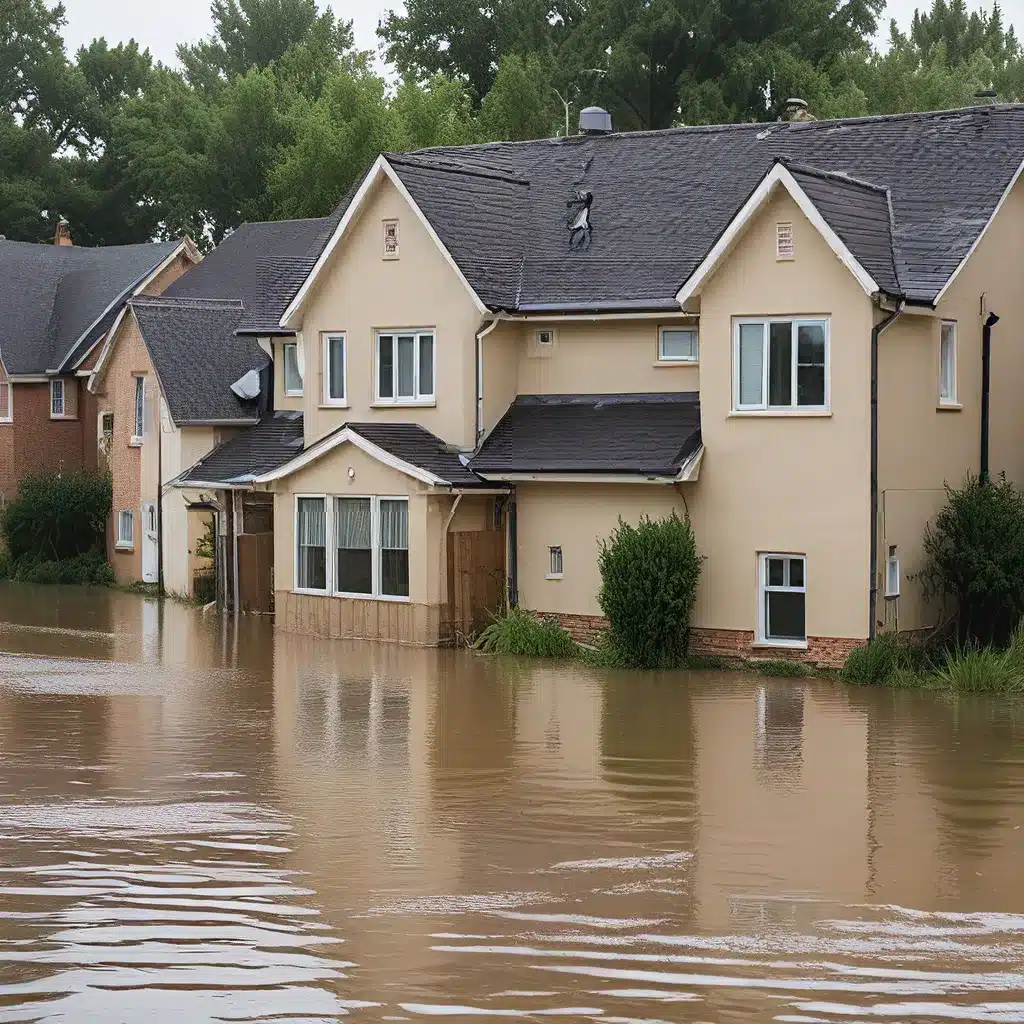
Imagine this: You wake up one morning to the sound of rushing water and a sinking feeling in the pit of your stomach. As you peek outside, you’re greeted by a sea of murky, swirling floodwater lapping at your front door. Your heart races, and a million questions flood your mind. How did this happen? What do I do now? And most importantly, could I have prevented this disaster in the first place?
If you’ve never experienced a flood firsthand, the idea of dealing with one can be utterly daunting. But the truth is, flooding is an all-too-common occurrence, and it’s a risk that every homeowner needs to take seriously. Whether you live in a coastal region prone to hurricanes or an inland area susceptible to heavy rainfall, understanding and mitigating your home’s flood risk should be a top priority.
Unraveling the Mystery of Flood Risk
I’ll admit, when it comes to the world of flood risk assessment, it can feel like navigating a labyrinth of technical jargon and complex data. But fear not, my friends – I’m here to break it down in a way that’s easy to comprehend.
According to the Federal Emergency Management Agency (FEMA), flood risk is primarily determined by a combination of factors, including the likelihood of a flood occurring in your area, the potential depth and duration of the floodwaters, and the potential for damage to your home and belongings.
One key factor to consider is the flood zone your property is located in. Flood zones are designated by FEMA based on the area’s history of flooding and the likelihood of future flood events. Zones range from low-risk (Zone X) to high-risk (Zone A or V), and this information can be found on FEMA’s flood maps.
But wait, there’s more! Flood risk can also be influenced by factors beyond your property lines, such as the condition of nearby waterways, the presence of levees or dams, and even the types of soil and vegetation in your area. It’s a complex web of interconnected elements that can make it challenging to pinpoint your exact level of risk.
Preparing for the Worst: Mitigating Flood Damage
Okay, so you’ve wrapped your head around the basics of flood risk. Now, the million-dollar question is: what can you do to protect your home and your family? Well, my friends, the answer lies in a strategic approach to flood mitigation.
According to FEMA, one of the most effective ways to mitigate flood damage is to elevate your home. This involves raising the structure’s foundation to a level that’s above the anticipated flood depth. Sounds like a major undertaking, right? Well, it can be, but the payoff is well worth it.
Elevating your home not only reduces the risk of floodwaters entering the living space, but it can also lower your flood insurance premiums. And let’s not forget the peace of mind that comes with knowing your home is better protected against the ravages of Mother Nature.
Another crucial step is to waterproof your home’s exterior. This can involve installing flood barriers, sealing cracks and gaps, and ensuring proper drainage around the foundation. By creating a water-resistant shell, you’re essentially building a fortress against the encroaching floodwaters.
But what about the interior of your home? Well, that’s where strategic placement of utilities and valuable belongings comes into play. By relocating electrical panels, HVAC systems, and other critical components to higher ground, you can minimize the risk of costly damage.
And let’s not forget the importance of regular maintenance and inspections. Keeping your gutters clear, your sump pump in working order, and your home’s foundation in tip-top shape can go a long way in preventing flood-related disasters.
Navigating the Flood Insurance Maze
Now, let’s talk about the elephant in the room: flood insurance. It’s a topic that can make even the savviest homeowners feel like they’re navigating a minefield of confusing policies and sky-high premiums.
According to a study published in the Journal of Flood Risk Management, the cost of flood insurance can vary greatly depending on factors like your home’s location, its elevation, and the level of risk in your area.
But here’s the thing – flood insurance is not just a luxury, it’s a necessity. Even if you live in a low-risk area, the potential for catastrophic damage from a flood event can be devastating. And let’s not forget that standard homeowners insurance typically doesn’t cover flood-related losses.
Navigating the flood insurance landscape can be a daunting task, but there are resources available to help. Your local general contractor can be an invaluable ally in this process, providing guidance on the best policies and coverage options for your specific situation.
Embracing the Power of Preparedness
At the end of the day, the key to weathering a flood event is preparedness. Whether it’s elevating your home, waterproofing your exterior, or securing the proper insurance coverage, taking proactive steps can mean the difference between a minor inconvenience and a full-blown disaster.
I know, it can all feel a bit overwhelming. But remember, you don’t have to face this challenge alone. Lean on the expertise of professionals, stay informed on the latest flood mitigation strategies, and never underestimate the power of a well-crafted emergency plan.
Because when it comes to protecting your home and your family, there’s no such thing as being too prepared. So, let’s raise a glass (or a sandbag) to the art of flood prevention – may it forever keep the waters at bay and your peace of mind intact.
Related posts:
No related posts.




